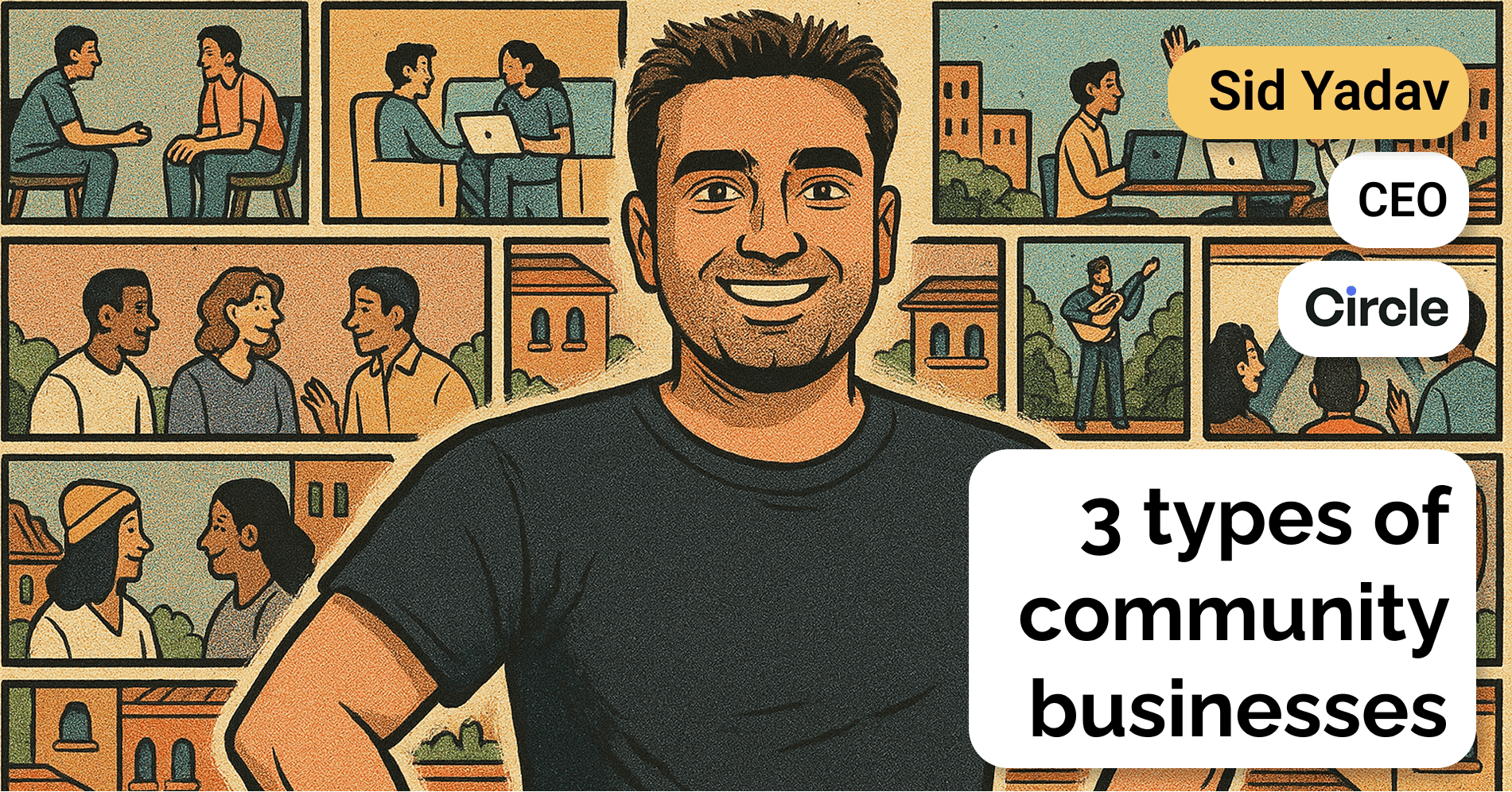C-suite at creator economy company on the competitive dynamics of checkout
 Nan Wang
Nan Wang
Questions
- Some creators have existing audiences. For the new buyers, how's the product first discovered? What's the discovery process for people to find things they want to pay for?
- We see a polarization of these all-star creators, who have got a huge follower base. Then there's a long tail of people who couldn't generate much sales. How do you see this evolve into something more sustainable?
- We see examples of people switching platforms. How much is the switching cost?
- Once the creators switch, how is the transition?
- Is it common for creators to only stick with one service provider, or would they have presence on multiple platforms?
- In terms of the competitive dynamics, how else do you see the market evolves?
- In terms of the fee structure, some platforms have a recurring flat fee, i.e. a SaaS provider, whereas Gumroad has a membership fee, $10 per month, and then they take transaction fee on top. So in the end, the average take rate is about 5 to 6%, or 5 to 8% if we include the payment fee as well. How do you see these different fee structures affecting creators’ decision of which platforms to go for?
- Gumroad is going to raise a round at $100 million in March. They prioritise to raise from creators. I see this as a pretty smart move in terms of aligning the incentives. Creators would want to generate more sales and that’s good for them both in terms of income and equity appreciation. Do you see this approach solve some of the churn, such as losing creators as they mature and generate more income?
- Is there anything that you think is important and we haven't talked about?
Interview
Some creators have existing audiences. For the new buyers, how's the product first discovered? What's the discovery process for people to find things they want to pay for?
Guest: A lot of it is organic right now. I think it's ultimately falling to the creator to do their own marketing. There are certainly marketplaces that have been around for a long time, like Udemy and Skillshare. But ultimately, that's not the future of the creator economy.
Ultimately, those are not really good for creators because the platforms end up taking a very large percentage of sales from creators and creators are realizing that. If they do their own marketing, if they find their audience on their own, they can make dramatically more money.
Tight now, I think people are finding courses through Google search. People are finding courses through word of mouth referrals. Many creators are finding the power of using affiliate marketing. So turning the people who have taken their courses and found success with their digital products, and then offering them commission for referring their friends to those products that I think is going to be a really powerful driver of discovery.
We're already seeing it now, but I think it's going to get more and more exciting. Gumroad has kind of a cursory marketplace and they have some interesting discovery there.
I think the big problem with discovery and marketplaces is that it creates a race to the bottom for prices. it creates a scenario where your course on how to program is next to 50 other courses on how to program and you can compete on a whole bunch of different things, but the most visible way that people compete is on price.
It's the easiest way to compete because that's the first filter most people are looking at when they look at a marketplace. I know a lot of people, including Gumroad, are trying to solve for discovery for creators, but I think the future is that creators are going to have to do their own marketing.
And as a parallel, we're seeing that in e-commerce as well, with the merchants wanting to move away from Amazon and Etsy and marketplaces like that. You're seeing unbelievable growth on platforms like Shopify, where merchants take over their own business. They own their own email lists. They do their own marketing. Shopify builds tools to make that easier. And of course, Shopify is building an entire ecosystem to make these things easier. But, ultimately merchants are taking ownership of their marketing.
I think we're going to see the creator economy move in the same direction.
We see a polarization of these all-star creators, who have got a huge follower base. Then there's a long tail of people who couldn't generate much sales. How do you see this evolve into something more sustainable?
Guest: That's a great question and it's a very important question because the reality is that I think some people talk about this as being the creator middle-class and it doesn't really exist. It's not being magnified and amplified and celebrated.
Being seven figure creators is not the reality for most people and continuing to only shine a spotlight on these creators who are earning huge amounts of money not only creates an unrealistic picture of what most creators who see themselves as successful.
There are plenty of creators who are earning more than the household income in America. They see themselves as successful, but as an industry, we're not telling those success stories.
That needs to be amplified, that has to be shown for people to see that as possible because until we tell that story, new creators will be scared. New creators will be scared to even start because they see, what the industry sees the success stories and they think “that's not possible for me. That's unattainable for me”.
We need to do a much better job of telling those stories of the people who are earning 40, 50, $60,000 a year, as a career.
We see examples of people switching platforms. How much is the switching cost?
Guest: There's the real switching cost and there's the perceived switching costs.
Perceived switching cost is always very high for people, because you're not just switching a product, you're switching a habit. A lot of people who are working in Gumroad or in Teachable or Thinkific or in Kajabi or in Patreon or whatever it might be, they've they have over a long period of time built a habit of: I'm going to log into this product, I know where everything is inside this product, I know where I go to see my analytics. I know where I go to send my emails, et cetera.
So changing habits, changing behaviours like that, the perceived switching cost is very high. So that's always something that we have to battle.
The actual switching costs really depend on the platform because there are two main categories of platforms. There are open platforms and closed platforms.
So Gumroad and Podia are open platforms. These platforms do not own the customer relationship or the content, or the data. Open platforms make it easy to take all of that with you when you leave. And in those cases, the switching costs are very low. It's usually you export a CSV, you import a CSV somewhere else. Some platforms offer free migration. It's a five minute process. It's very easy.
In contrast, there are a lot of platforms that are closed. An example of that would be something like Patreon, which creates lock-in where they build this moat that makes it more and more difficult for their customers to leave. They don't allow you to move subscriptions off of Patreon. They make it very difficult to get email info and switch to another platform.
Once the creators switch, how is the transition?
Guest: It varies based on the platform. Generally, on major platforms, when somebody switches, the new platform imports their customers and their products, and migrates everything onto the new platform.
On the backend, when the platform imports somebody’s customer list as well as the person's product, the new platform can pretty easily map which customers need access to which products. All of that works just fine.
Then, all creators need to do is to send an email to their customer list and say :Hey, this is the new place you can access your product, click on this link to set your new password.
Is it common for creators to only stick with one service provider, or would they have presence on multiple platforms?
Guest: It's much more common for people to use multiple providers when they're not on an integrated platform. And the reason for that is a lot of providers only offer one or two different types of content that you can sell.
For example, you can sell digital downloads on Gumroad. And then as of recently, they're offering a membership product, so you can sell digital downloads and a membership product on Gumroad now, but you can't really sell online courses.
You can sell online courses on Gumroad like an email course maybe, but they don't actually have a powerful course viewing experience for the end user. People who want to sell digital downloads as well as memberships, as well as online courses, then they'll use Gumroad plus Teachable or maybe Gumroad plus Podia for their courses.
Before Gumroad launched memberships, it would have been Gumroad for your digital downloads, Podia or Teachable for your courses, and then they would use something like Patreon, maybe for their membership. And that creates a lot of challenges. Obviously, it creates all these data gaps, and a lot of complexity for the business.
I think where the creator economy is moving is that people are going to want everything in one place. So more and more platforms will become a comprehensive all-in-one suite for creators to support all of these different content types. Just because it's far easier to keep track of everything in one place for creators.
You're seeing the same thing with Gumroad there. They were supporting digital downloads. They're going to support memberships. And I think I saw that in 2021, they plan to support courses.
In terms of the competitive dynamics, how else do you see the market evolves?
Guest: I think there's going to be a lot more focus on human connection, and that's going to take shape in two ways.
One is community and we're already seeing this. There are already competitors coming into the market. There's a company called Circle, which is a community platform. We're seeing more and more creators want to build their own communities because they're realizing that if they can build this community of really engaged people, that especially if those people are willing to pay for access to that community, that becomes a source of stable, recurring income that they can use. It's a much more sustainable long-term business strategy to have a community of people who are already accustomed, are in the habit of paying you money every month.
The other piece of that as I think we're going to see a return to selling one-on-one consulting and coaching. This is interesting because many creators get into this because they want to stop selling their time and they want to scale beyond selling one-on-one. I think we're very much in the early days of this, but we're seeing a lot of creators once they have built a successful business, they get even more interested in selling coaching and selling consulting to people. And usually that happens at a much higher price than they used to sell their time for. They now have acquired a bunch of very specialized skills that a lot of people want to learn. So they can turn around and sell those via coaching.
In terms of the fee structure, some platforms have a recurring flat fee, i.e. a SaaS provider, whereas Gumroad has a membership fee, $10 per month, and then they take transaction fee on top. So in the end, the average take rate is about 5 to 6%, or 5 to 8% if we include the payment fee as well. How do you see these different fee structures affecting creators’ decision of which platforms to go for?
Guest: It's probably one of the key differentiators, between platforms that charge a monthly fee versus platforms that make most of their money on transaction fees.
The way that we see it manifesting is creators who are entrepreneurial and are committed to starting a business tend to be more willing to invest in a tool: “I invest in that tool upfront and then see that as a cost of business.” This type of creator18 will choose something like Podia or Kajabi.
Gumroad, and generally fee based platforms, obviously have a much lower barrier to entry for people who want to get started. So what often happens is that people will choose a tool like Gumroad for testing an idea: “I have this idea for an ebook, or I have this idea for a course or some kind of paid download. I'm going to test it on Gumroad because there's no risk involved. I'm just going to put it on there and see if anybody buys.”
What we often see is that there's an income threshold at which creators will switch from something like Gumroad to Teachable, to Podia, to Thinkific, to Kajabi, because they're seeing that the paying a monthly fee for a fixed and predictable cost, will be cheaper for them in the long term, than paying for transaction based variable cost.
The transaction fee pricing disproportionately benefits creators who are starting from zero and want to just test something. Then at one point, it disproportionately benefits the platform over the creator.
Gumroad is going to raise a round at $100 million in March. They prioritise to raise from creators. I see this as a pretty smart move in terms of aligning the incentives. Creators would want to generate more sales and that’s good for them both in terms of income and equity appreciation. Do you see this approach solve some of the churn, such as losing creators as they mature and generate more income?
Guest: I think it's a really interesting approach. I was fascinated when I saw that it was going to raise from creators. I think it's clever. I think it will certainly help with retaining creators who are able to invest in it.
But I think that we are also at such a nascent, early point in the creator economy. 99.9% of the creators who will ever exist on Gumroad, will not participate in this round. Either because they don't know about it yet or because they can't afford to. Maybe it will help with retention from the current cohort of successful creators, if they want to put some skin in the game.
I don't really see it as a long-term strategy for battling churn.
I think the only thing you can really do to battle churn is to make sure people sell and to make sure people are happy.
Those are really the only two levers that you have as a platform.
Making sure people sell, that's building tools for creators to have whatever they need to do their marketing and a good customer experience for their end users.
Keeping people happy is making sure that you're delivering fantastic customer support, making sure that the NPS is really high.
That's something I think is going to be challenging for companies with very low customer lifetime value, i.e. companies that are transaction-based.
Those creators who are very early in their careers aren't going to be worth very much money to the company. So it's extremely expensive to provide great customer support for them.
That's really the only reason that some platforms don't have a free plan. The reason for not having a transaction fee only plan is because some platforms want to invest heavily into customer support, and to keep NPS really high. Those are really the two things: making sure people are selling and making sure people are happy.
Is there anything that you think is important and we haven't talked about?
Guest: I think the most important overriding thing, and this is true for Gumroad it's true for any creator economy company, is that this is where e-commerce was in 2005 when Shopify was trying to raise money and investors didn't understand what the TAM was, because they thought it was ”just going to take over some of the market share of people currently selling on Amazon.”
We are at the absolute bottom of this industry, when you think about it in relative terms, this is going to look extremely different. I think anybody right now who gets into the business of serving creators, making sure creators can sell more products and earn more money, is getting into a very high momentum industry at a very early stage.
Disclaimers
This transcript is for information purposes only and does not constitute advice of any type or trade recommendation and should not form the basis of any investment decision. Sacra accepts no liability for the transcript or for any errors, omissions or inaccuracies in respect of it. The views of the experts expressed in the transcript are those of the experts and they are not endorsed by, nor do they represent the opinion of Sacra. Sacra reserves all copyright, intellectual property rights in the transcript. Any modification, copying, displaying, distributing, transmitting, publishing, licensing, creating derivative works from, or selling any transcript is strictly prohibited.




